Cheirotonus parryi
With the elongated forelegs of the males, Cheirotonus parryi is one of the most charismatic of all beetle species. John Edward Gray first described Cheirotonus parryi in the Transactions of the Entomological Society of London in 1848.
Today marks the 200th birthday of an important English entomologist, Major Frederick John Sidney Parry (28th October 1810 – 1st February 1885), after whom the beetle is named.
Parry joined the 17th Lancers in 1831 and went on to become a major in the British Army. He became a Fellow of both the Entomological Society of London in 1840 and the Linnean Society in 1842. He published on all families of Coleoptera but it is his work on the Lucanidae or stag beetles that he will be remembered for, with a large part of his extensive collection residing here at the Natural History Museum.
Parry has many other species of beetle named in his honour by revered contemporaries including Wallace, Bates and Hope.
Species detail
-

Taxonomy
Cheirotonus parryi shares its range with two other related species. Find out how you might tell them apart.
-

Distribution and habitat
This species can be found in primary forest in parts of Asia. Discover where its larvae like to live.
-

Biology
Male Cheirotonus parryi beetles have incredibly long legs, but no-one knows why. Find out what we know about the lifecycle of this scarab beetle.
-

Behaviour
These beetles a strong fliers and feed on tree sap and fermenting fruit. Read on to discover how their movements on the ground have been described.
-

Conservation
Cheirotonus parryi is a protected species in Thailand, and although not uncommon throughout its range, it faces pressure from habitat destruction. Find out more.
-
References
Get more reference material for Cheirotonus parryi.
Images

The three similar Cheirotonus species. C. gestroi (l) C. parryi (m) C. macleayi (r)
© H Warner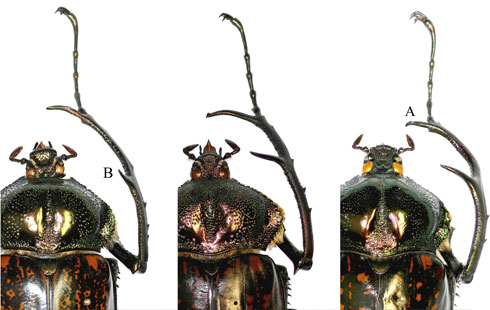
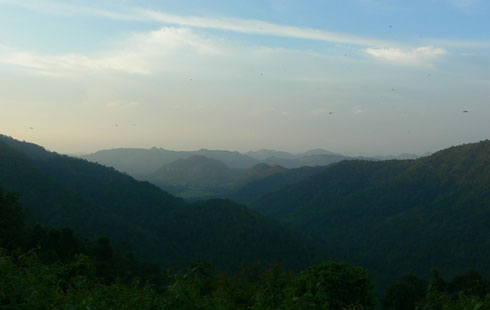
Khao Yai National Park, Thailand, the habitat of Cheirotonus parryi
© S & T Butcher
Naga Hills, India, an important habitat for many different animal species, including Cheirotonus parryi
© R Willaert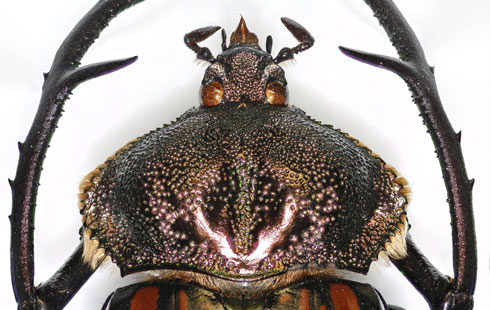
The shiny pronotum of the male Cheirotonus parryi
© H Warner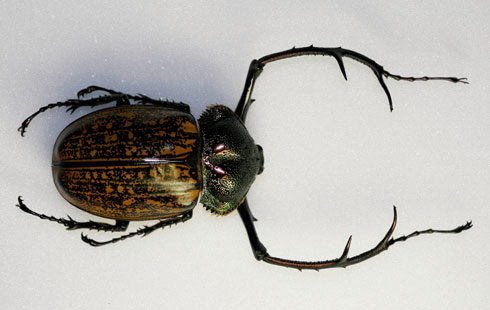
The male Cheirotonus parryi
© H Warner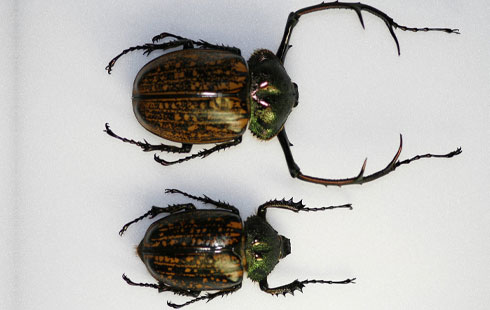
Male (l) and female (r) of Cheirotonus parryi
© H WarnerAuthor
Hitoshi Takano
Academic Visitor, Department of Entomology.
A word from the author
'The history of entomology fascinates me, in particular those entomologists and explorers who went to astonishing lengths in the name of scientific enlightenment. Today’s species honours such an individual; Major FJS Parry, a little known entomologist whose work on stag beetles is still to this day invaluable. Cheirotonus parryi is one of the most charismatic of all beetles and is an apt species for this day – an extraordinary beetle to honour an extraordinary entomologist.'
